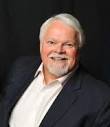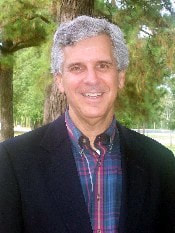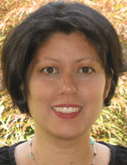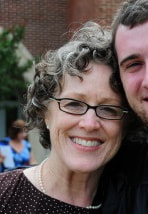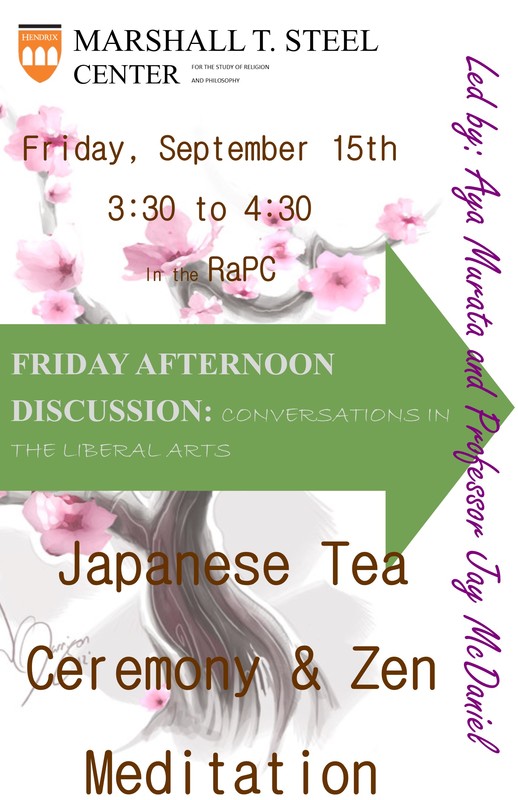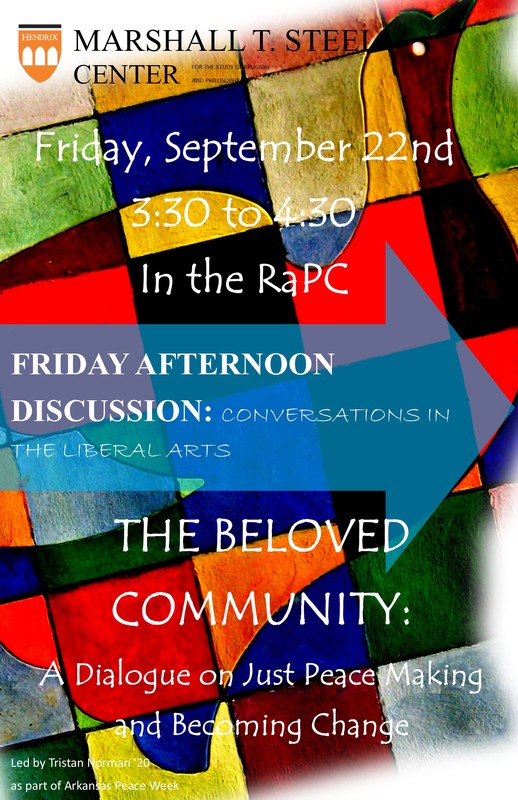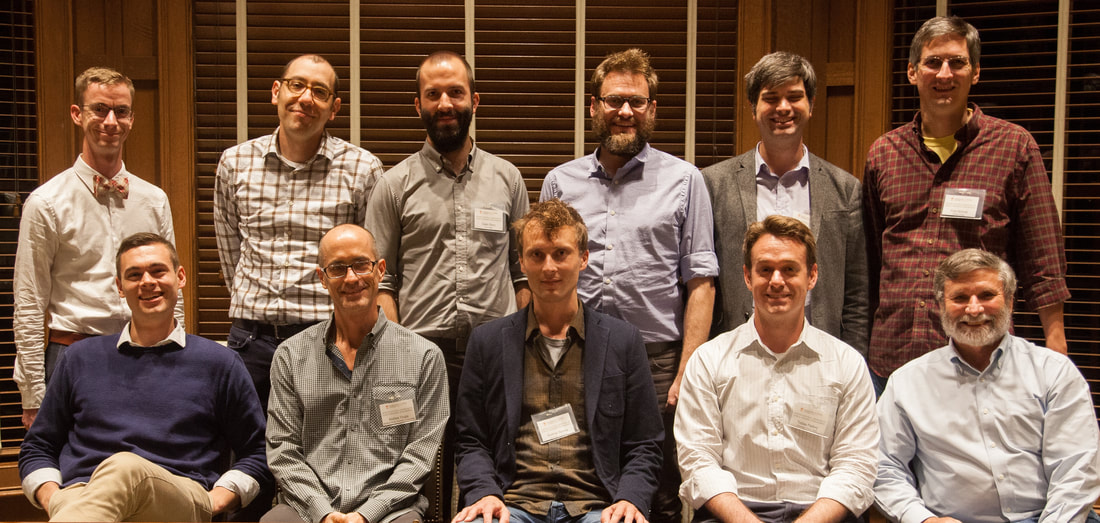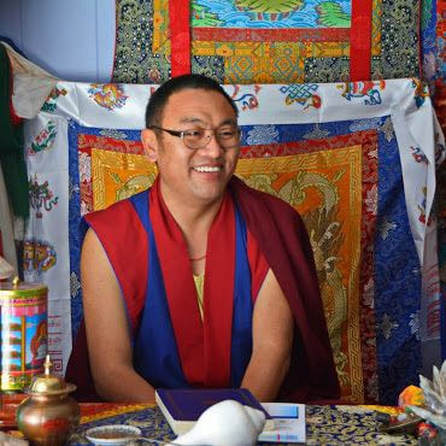The Raney Building and Steel Center
part of the liberal arts experience at Hendrix College
created by Jay McDaniel (3/28/2018)
Liberal Arts Spaces
Education needs places and spaces. It needs buildings where minds can widen and hearts unfold, because the atmosphere is conducive to the sharing of ideas. From 1972 - 2016 the Raney Building was this kind of space. It was the home of the Departments of Philosophy and Religion, the Steel Center for the Study of Religion and Philosophy, and the Chaplain's Office. It was known throughout the campus as a place for conversation, freedom of thought, curiosity, exploration, relaxation, soft sofas, and free coffee -- otherwise called the Liberal Arts Experience. Now things have changed. On the site for the old Raney Building sits a wonderful new building: the Dawkins Welcome Center. It. too, is quickly becoming a liberal arts space. But the Raney spirit continues as well. In 2018 the Departments of Philosophy, Religion, and the Steel Center will move to Ellis Hall, and begin developing a fresh, new approach for the further evolution of the "Raney" spirit.
Education needs places and spaces. It needs buildings where minds can widen and hearts unfold, because the atmosphere is conducive to the sharing of ideas. From 1972 - 2016 the Raney Building was this kind of space. It was the home of the Departments of Philosophy and Religion, the Steel Center for the Study of Religion and Philosophy, and the Chaplain's Office. It was known throughout the campus as a place for conversation, freedom of thought, curiosity, exploration, relaxation, soft sofas, and free coffee -- otherwise called the Liberal Arts Experience. Now things have changed. On the site for the old Raney Building sits a wonderful new building: the Dawkins Welcome Center. It. too, is quickly becoming a liberal arts space. But the Raney spirit continues as well. In 2018 the Departments of Philosophy, Religion, and the Steel Center will move to Ellis Hall, and begin developing a fresh, new approach for the further evolution of the "Raney" spirit.
“The Raney Building was a special place for so many Hendrix students, whether they came for classes with legendary professors, a Friday Afternoon Discussion, or just to visit with classmates and faculty." (Wayne Clark, former student now on Hendrix staff)
Faculty and Staff who helped
Create the Raney Atmosphere
Friday Afternoon Discussions
A Raney Building/Steel Center Tradition
Friday Afternoon Discussions were held in the Raney Building for twenty five years. They took place from 3:30-4:30 in the lobby, with refreshments for all. These discussions were initiated in 1979 by Dr. Francis Christie under the title "Sodality for Harmless Drudges." Faculty in the building -- John Churchill, Francis Christie, John Farthing-- would bring out the Oxford English Dictionary and explore the etymology of words: "curmudgeon," for example. Their delight was in the joys of language. Soon they realized that students and faculty around campus wanted a place to discuss ideas and contemporary issues in an interdisciplinary context. In 1981 the Friday Afternoon Discussions were born. On a Friday afternoon the Raney Building was the place you could go to stretch your mind at the end of a long week. Click on the button below to see photos from a Friday Afternoon Discussion with President Tsutsui in 2016. Below the button you'll see the topics for 2015-2016.
A Sample of Publicity Posters
for Friday Afternoon Discussions
2017-2018
** Held in temporary quarters: Religion and Philosophy Commons, prior to move to Ellis Hall
And some videos, too.
|
Conway's Phillip Fletcher on a Life in Rap
Roshi Keido Fukushima (frequent visitor 1985-2009) *
|
NPR's Ann Powers on Music and Spirit
Nyasha Junior on Biblical Scholarship
|
Sample of Recent Steel Center Offerings
(in addition to Friday Afternoon Discussion)
Discussions on Philosophy and Film
Conference on Modern Philosophy
The Great (Tibetan) Sand Mandala
Plus...
|
“Calming the Mind, Engaging the Heart: A Guided Meditation in the Tibetan Tradition”
THURSDAY APRIL 28, 2016 Mills Library at 4:10 p.m. Presented by Geshe Shenpen Samdrup and Dr. Gorvine Come meet Geshé Shenpen Samdup, a monk, scholar, and spiritual teacher in the Tibetan Bön religious lineage who was born in the Himalayan kingdom of Bhutan and comes to us from Menri monastery in northern India. Drawing from his many years of study and practice, along with his experience working with students from around the world, Geshé Samdup will share insights and invite participants to get an experiential appreciation for how Tibetan practitioners understand and undertake meditation practice, and how these approaches might be of value to a variety of interested people. Religious language: How “different” is it from everyday language and why?
THURSDAY, APRIL 7, 2016 Presented by guest speaker Dr. Eve Sweetser Professor of Linguistics, University of California – Berkeley It is rather a standing trope of the discourse about religious language that it is special. This is often said to be due to the ineffable nature of religious experience, simply beyond the capacity of language to express. And yet – we keep on using language to express it. Indeed, we keep on using the same kinds of language (many of the same metaphors, for example) which are part of our everyday grammatical repertory. This talk will explore some of these structures, and discuss some of the reasons why this should be so. Epistemic Injustice and the Child Presented by Dr. Deborah Tollefsen
NOVEMBER 10, 2016 In Epistemic Injustice (2007) Miranda Fricker argues that there is a distinct type of harm done to those who are discredited due to prejudicial stereotypes. This harm is distinctively epistemic in nature as it prevents a person from participating in the knowledge production practices of a community and deprives a subject of full epistemic status. The examples that Fricker focuses on are those involving race and gender. The woman who is given less credibility in the boardroom when she speaks, for instance, because of prejudicial stereotypes about women, suffers not just a moral injustice, but an epistemic one. Dialogue with others—dialogue across difference—is possible only if we acknowledge the phenomenon of epistemic injustice and work to ameliorate it. In this talk, I raise the question of whether children, as a class, are subject to epistemic injustice. I argue that they are and that this is not only detrimental to the child but to the adult's ability to understand and gain knowledge of the world. |
* The video of Roshi Fukushima was taken at Oglethorpe University Museum of Art in 20013. Roshi Fukushima performed similar exhibitions at Hendrix College from 1985-2009.






